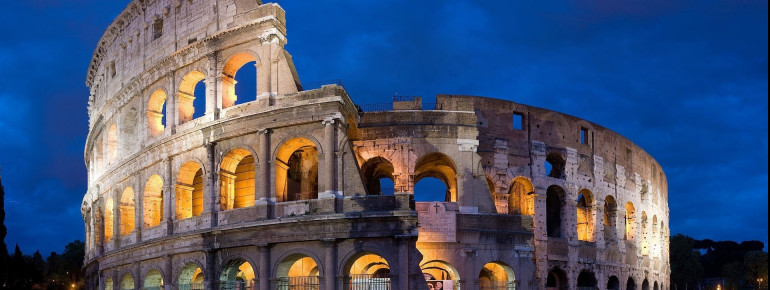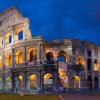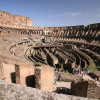Contents
Description
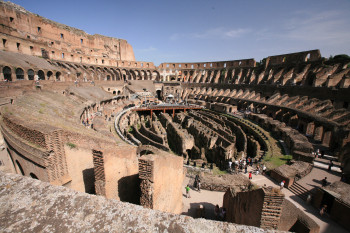
The Colosseum
The Colosseum (Latin: Amphitheatrum Flavium, Italian: Anfiteatro Flavio or Colosseo)), is the largest amphitheater built in ancient Rome and the largest single building of Roman antiquity. Built between 72 and 80 AD, it is now one of the landmarks of the city and at the same time a testimony to the high standing architecture of ancient Romans. It is the largest amphitheatre in the world and also one of Rome's most popular tourist attractions. It has close connections with the Roman Catholic Church, as each Good Friday the Pope leads a torchlit "Way of the Cross" procession that starts in the area around the Colosseum.
Panem et Circenses - Bread and circuses
The Colosseum is built elliptical. Its width is 156 meters, its length 188 meters, its circumference 527 meters and its height 48 meters. Even the floor of the arena was elliptical, with a width of 54 meters and a length of 86 meters. The round shape should prevent gladiators, convicted people or hunted animals to find protection in a corner. In addition, the ellipse allowed the audience to be closer to the action than in a circular arena.
Visit the Colosseum
Large parts of the Colosseum are accessible to wheelchair users and there is a lift to some of the upper levels - please mention that you'll be wanting to use the lift/elevator at the moment you pick up your tickets - you will likely be given a sort of pass for the lift.
Historical Information
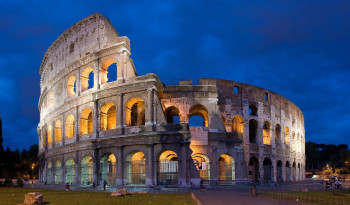
The Colosseum is situated just east of the Roman Forum. Construction began under the emperor Vespasian in 70 AD, and was completed in 80 AD under his successor and heir Titus. Further modifications were made during the reign of Domitian (81–96). These three emperors are known as the Flavian dynasty and the amphitheatre was named in Latin for its association with their family name (Flavius).
The Colosseum could hold, it is estimated, between 50,000 and 80,000 spectators and was used for gladiatorial contests and public spectacles such as mock sea battles, animal hunts, executions, re-enactments of famous battles, and dramas based on Classical mythology. The building ceased to be used for entertainment in the early medieval era. It was later reused for such purposes as housing, workshops, quarters for a religious order, a fortress, a quarry, and a Christian shrine. Although in the 21st century it stays partially ruined because of damage caused by devastating earthquakes and stone-robbers, the Colosseum is an iconic symbol of Imperial Rome.
The Colosseum was listed as a World Heritage Site by UNESCO in 1980. In 2007 the complex was also included among the New 7 Wonders of the World.
The Colosseum is also depicted on the Italian version of the five-cent euro coin.
Interesting facts
- The day pass at The Colosseum is €18 making it one of the 3 cheapest tourist Attractions in Lazio.
How to get there
By public transport:
Metro B "Colosseo", Tram 3 "Colosseo"
Busses: 60, 75, 81, 85, 87, 117, 175, 271, 571, 673, 810, 850

